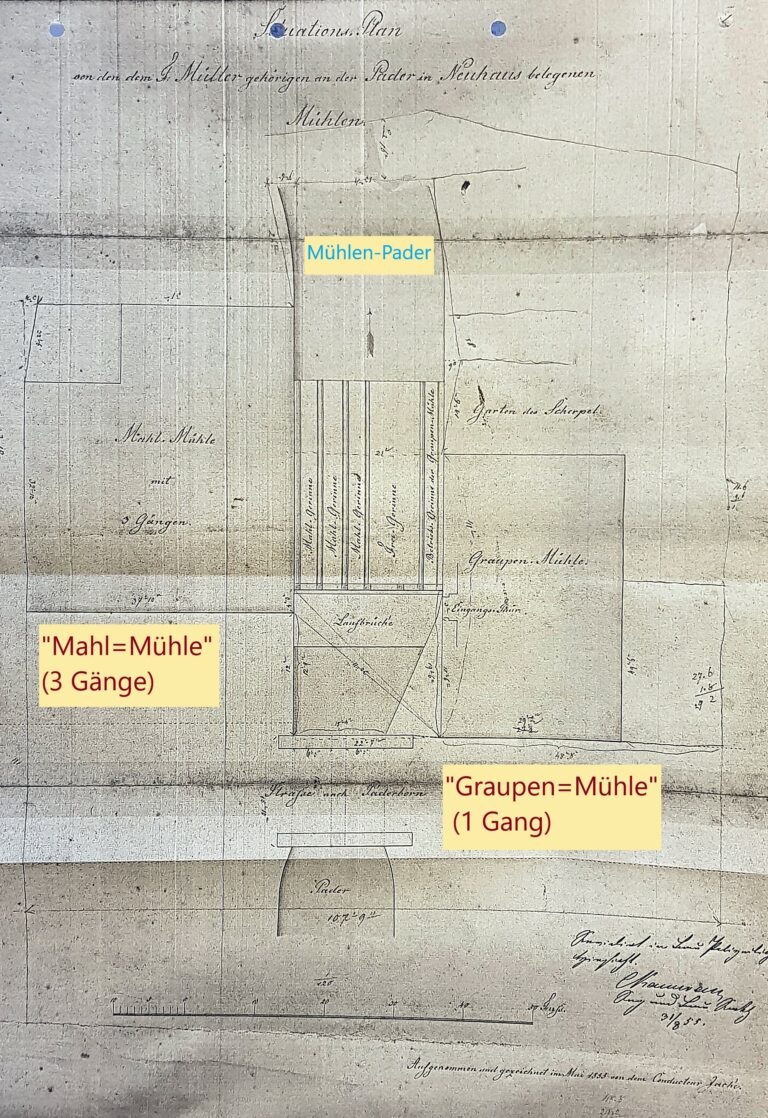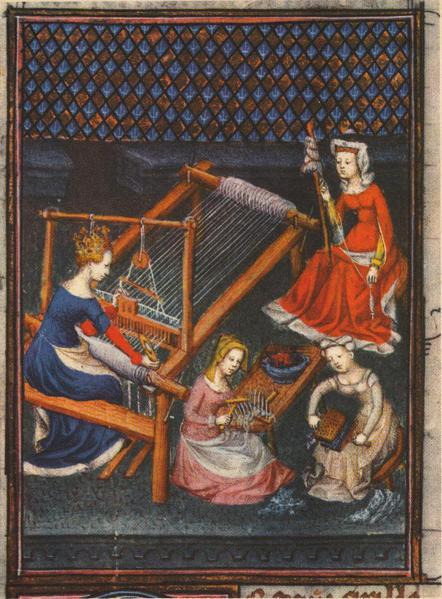[1] Amtsrechnung 1445-47, quoted from Rade, Bewohner, S. 22; 27. Cf. also Kandler/ Krieger/ Moser, Schloß Neuhaus, p. 52.
[2] Manfred Balzer assumes that the farmland of the former „Hof Enenhus“, which stretched along the Pader, was cultivated from the 14th-17th centuries from the „princely outwork in Neuhaus“. According to this, the buildings of the castle economy would once have been located to the west of the castle. Balzer., Stadtlandwehr und Stadtgebiet, p. 216, note 151.
[3] Ämterrechnung Neuhaus (1603/04): „Henrich the carpenter, Gerden Herman und Malten Rottger [have] worked 6 days“ on the „stacket [fence] for the garden“ […] one worked 2 days on the Mollengrafft.“ LA Münster, Fürstbistum Pb, Ämterrechnungen Neuhaus Nr. 1046, fol. 106r-111r.
[4] Cf. Ämterrechnung Neuhaus (1596/97), LA Münster, Fürstbistum Pb, Ämterrechnungen Neuhaus Nr. 1046, fol. 46r; 83r.
[5] Heinrich Schäfers assumes that the „Neuhäuser Kornmühle“ was rebuilt(?) in 1590. Schäfers., Standorte, p. 84.
[6] Cf. Ämterrechnung Neuhaus (1606/07), LA Münster, Fürstbistum Pb, Ämterrechnungen Neuhaus Nr. 1050, fol. 137r. In addition, there are two pairs of shoes each worth 3 Taler, 15 Schillinge and 8 Pfennige.
[7] Ämterrechnung Neuhaus (1663/64), LA Münster, Fürstbistum Pb, Ämterrechnungen Neuhaus Nr. 1072, fol. 130v.
[8] Cf. „Newhausischer Mühlen Contract“, 21 March 1711. LA Münster, Fürstbistum Pb, Hofkammer Nr. 765, fol. 14r-16v.
[9] „On the ridge of the gable roof [of the corn mill] was a weather vane with a coat of arms and the year 1710.“ Middeke, Bild der Heimat, p. 5.
[10] Art. 6, Mühlenkontrakt 21 March 1711. LA Münster, Fürstbistum Pb, Hofkammer Nr. 765, fol. 15r-15v.
[11] Friendly hint by Mr Gregor G. Santel, November 2019. Cf. also Schwede, Arnold: Das Münzwesen im Hochstift Paderborn 1566-1803, Paderborn 2004, p. 37f.
[12] Cf. Copy of the judgement of the „Königliche Generalkommission zu Münster“, 28 October 1870: According to this, the lease of 30 Oct. 1815 records this number. StadtA Pb, A 3323, fol. 167v.
[13] Cf. Mutterrolle (1832), LA Detmold, M 5 C, Nr. 1469, Nr. 15 (Flur V, Parz. 13), unfol.
[14] Cf. „Abschrift der Konzessionierung für Müller Heinrich Bodenstab“, 18 July 1832. LA Detmold, M 1 I U, Nr. 660, unfol. The old mint is described as a „barn on the right bank of the river“ in the survey of the master path builder Vogeler dated 22 July 1831.














